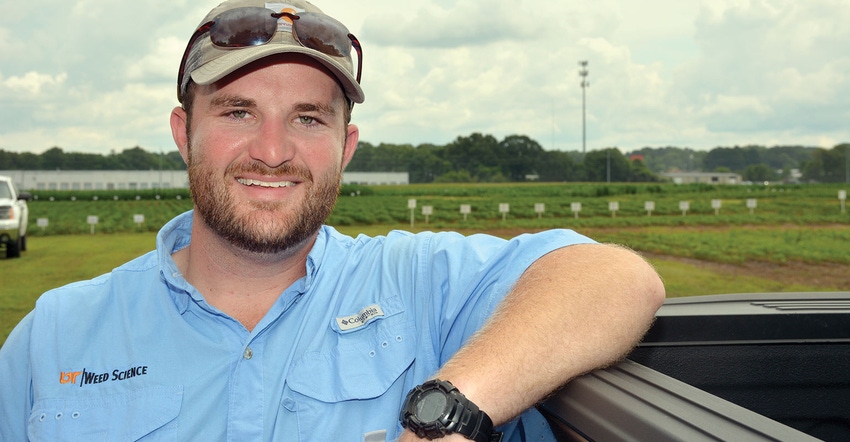
Hard-to-control grassy weeds suspected of herbicide resistance may be victims of herbicide antagonism instead, says a University of Tennessee graduate student.
PhD candidate Clay Perkins discussed ongoing research during a recent weed tour at the West Tennessee Research and Education Center in Jackson.
“I'm working on the glyphosate-tolerant grasses such as barnyardgrass and junglerice,” Perkins said in an interview following the tour. “Recently we've thrown in johnsongrass.”
He explained that over the past two years farmers have been applying 4 ounces of clethodim (Select) with glyphosate and a dicamba product in the spray tank to control those grasses. “Control failures keep appearing using those rates,” he said.
“So, they started jumping up to 8 ounces or 10 ounces, and that didn't work, either. Now we're trying to throw in higher rate of 12 ounces.”
Some suspected herbicide resistant or tolerant plants. But maybe not.
Key culprit
“Preliminary screening this spring shows that we don't have a resistance issue everywhere, but that herbicide antagonism (the reduction of control of certain weeds as the result of applying mixtures of two or more herbicides) is a key culprit to lack of control,” Perkins said.
“We're just starting to dive into that more, trying to figure out what's going on with the antagonism effect. Here in Jackson, I think Dr. Steckel (Larry Steckel, UTIA weed scientist) called it, we have some weak grasses.”
Perkins says they were able to achieve up to 95 to 97 percent control of barnyardgrass and junglerice. “Closer to the river, control drops a little bit, but it's still getting anywhere between 80 to 90 percent control.
“The antagonism effect we're seeing is when we put dicamba in the tank, whether it’s with Roundup or Select or all three — Roundup, Select and dicamba — that control drops.” With dicamba in the tank, Perkins says control drops by 5 to 10 percent.
Significant control reduction
He’s also looking at nozzle differences. “We're comparing TTI and flat fan nozzles. The difference between them is anywhere between 10 and 20 percent reduced control with the TTI nozzles.
“When we combine those two factors (antagonism and nozzle selection), we’re getting anywhere from 20 and 30 percent less control.
“Now, we're diving a little deeper into that antagonism effect, trying to figure out what's going on with these grasses.”
Timing effect
At one of the tour stops, Perkins discussed the effect herbicide application timing — sunrise versus noon — may have on weed control.
“Here in Jackson, we didn't see much difference between Roundup and Select at the different application timings,” he said.
They did note some discrepancy with Fusillade, but with a caveat. “I think we need to remind ourselves that Fusillade is not the best option on our annual grasses; it’s still a knockout product with the johnsongrass, though.
“I think we saw today that the low rate, 6 ounces of Fusillade applied at noon, might've been a little better than the full rate, 12 ounces, at sunrise. We saw a little effect with Fusillade, but still, we’re getting between 60 and 70 percent control out of the Fusillade.”
He said Liberty application timing is important. “We know that Liberty will always have a time-of-day effect, noon versus sunrise. We saw a little bit of that today. But Liberty is just not a grass product.”
The better grass products, Roundup and Select, showed little difference between application times. “We didn't see that much difference on those, comparing the two application timings.”
About the Author(s)
You May Also Like






